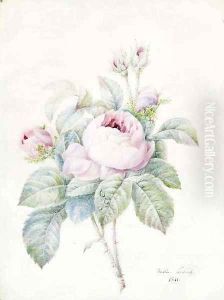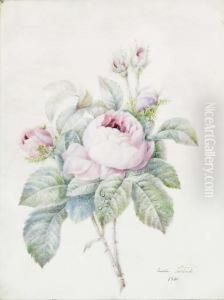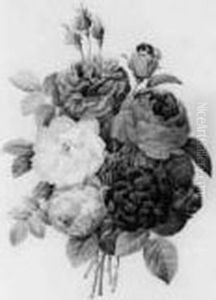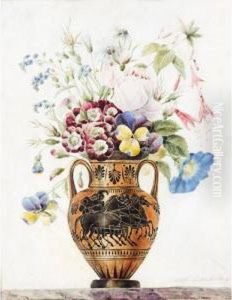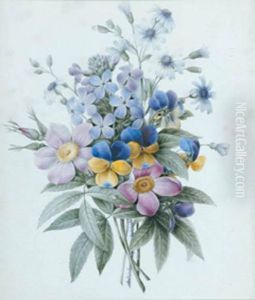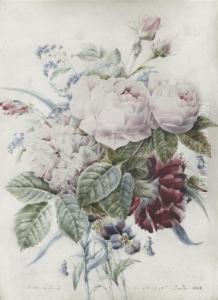Anne-Ernestine Panckoucke Paintings
Anne-Ernestine Panckoucke, born in 1784 and dying in 1860, was a French artist whose life spanned an era of significant political, social, and artistic transformation in France. While not as widely recognized as some of her contemporaries, her work provides a fascinating insight into the artistic and cultural milieu of her time. Daughter of the publisher Charles-Joseph Panckoucke, she grew up in an environment steeped in intellectual and artistic pursuits, which undoubtedly influenced her career path.
Anne-Ernestine's artistic journey is less documented than those of her male counterparts, a common issue for female artists of her era. However, her surviving works and the accounts of those who knew her suggest she was a skilled painter, possibly focusing on portraits and genre scenes, which were popular among the French bourgeoisie and aristocracy during the late 18th and early 19th centuries. Her style would have been influenced by the neoclassical movement prevalent during her youth, characterized by a return to classical simplicity, clarity, and harmony, before transitioning to the more ornate and emotionally charged Romanticism that swept through Europe in her later years.
Despite the historical overshadowing by her male peers and the limitations placed on women in the arts during her lifetime, Anne-Ernestine Panckoucke's contribution to French art history is significant. Her work not only reflects the aesthetic transitions of the period but also offers a window into the social changes and the role of women in the arts during one of the most tumultuous periods in French history. Her legacy, while perhaps not as celebrated as it should be, remains an important testament to the contributions of female artists in the early modern period. Her death in 1860 marked the end of an era, but her artistry continues to be a point of interest for art historians exploring the depth and diversity of French art in the 18th and 19th centuries.
